The reconsideration of manhood was on the agenda in Milan for Gucci’s Fall/Winter 2020 Menswear Show this week, as the house’s creative director, Alessandro Michele, relied on the innocence of childhood as a theme to convey an unlearning of toxic masculinity. A photo series was shared on the brand’s Instagram account, which contained a prosaic and powerful artist statement for the show. This statement invited their online audience to unpack the harmful stereotypes of masculinity, which is defined by character traits, like aggressiveness and virility, that are fostered both culturally wide and internally by the individual. The issues that consequently manifest from the normalization of toxic masculinity have often been violent and stem from the expectation of emotional repression that males are subjected to from an early age.
Love magazine fashion critic Pam Boy posts his invitation to the Gucci FW 2020 menswear show.
The statement was written on what resembled a school notebook and the font for the “cover” was something of a child’s handwriting. This was also true of the invitations to the event, which, according to fashion critic Pam Boy, were designed to look like invitations to Gucci’s birthday rave. Melting the celebration of Alessandro’s fifth year at Gucci with the P.L.U.R. (peace, love, unity and respect) element of modern raving, in addition to the childhood trope seemed confusing at first. This mixed bag was more sensical in context though, for as the show began it became clear that the underlying theme was age regression therapy, most specifically hypnosis.
Gucci prep-school lunch pail. Photo: theimpression.com
The show opened with a spotlight cast onto a gigantic silver ball that swung slowly in the middle of the runway, continuing to swing as the models walked. Speculatively speaking, it seemed as though Michele wanted to access the inner-workings of the audience’s psyche through his collection via hypnotherapy, a process where patients move their focus to memories of an earlier stage of life in order to explore these memories or to get in touch with some difficult-to-access aspects of their personality. This psychological aspect of the show is undeniably fitting as a touchpoint for unpacking toxic masculinity; the issue Michele pointedly tried to tackle. Superimposing hypnotherapy, a practice designed to be singularly used on an individual, to an entire audience is reflective of how deeply ingrained toxic masculinity is in society at large.
Alessandro’s “Mon Petit Chou” sweater on the runway. Photo: vogue.com
The vulnerability behind the therapeutic aspect of the show was worked in with pieces that lent themselves to tropes of childhood and education, the formative years, with lunch boxes and suitcases paired with blazers, short shorts and knee socks. These outfits were closely aligned with the quality of agreeableness, especially when juxtaposed with the cooler and more mature side to Michele’s vision. Distressed and ripped jeans, layers completed with flannels and, most notably, a cheetah print coat defined this group within the collection, which would most likely speak to the customer with a rebellious streak in them. An ideal choice for those who score lower on the conscientiousness scale.
Comfort also played an undeniable role in the collection, which was engendered in the knit sweaters embroidered with French pet names, like “mon petit” and “mon petit chou”. Fitting for the potential customers whose disposition is marked by a high level of agreeableness, as the sweaters would appeal to their inclination toward pastels and inoffensive prints.
Open-mindedness was the crux of the concept for this show, which would draw in the type of customer who tends to think creatively and likes to dress in pieces that are as unexpected as the shiny silver or lustrous emerald green trousers featured in the collection. Nervousness and worry, in regards to the condition of manhood, was also prominent in the preliminary information about this menswear collection, which would probably resonate with the customer who is prone to anxious feelings themselves. The matching, black leather, double-breasted jacket and shorts combo is magnificently suited for the customer who is resolutely trying to mask their emotions while also being an expressive and creative individual. This style in particular (preppy and conformist offset by the material) highlights the conscientious styling of the show, which, overall, had those who score both low and high in the category in mind. It seemed that there was something to offer there for everyone, which worked well with the overarching narrative of social reform.
Reimagining what it means to be masculine reminds us of what is lost in the current framework, which could make us lash out with frustration, feel the need to be comforted or revisit the time in our lives when we learned the expectations rooted in common gender differentiations. Michele’s approach took these factors into account and effectively produced a line with strong narrative arch and cultural significance, hypnotizing us in the process. Guess that’s why they broke, and he’s so paid.





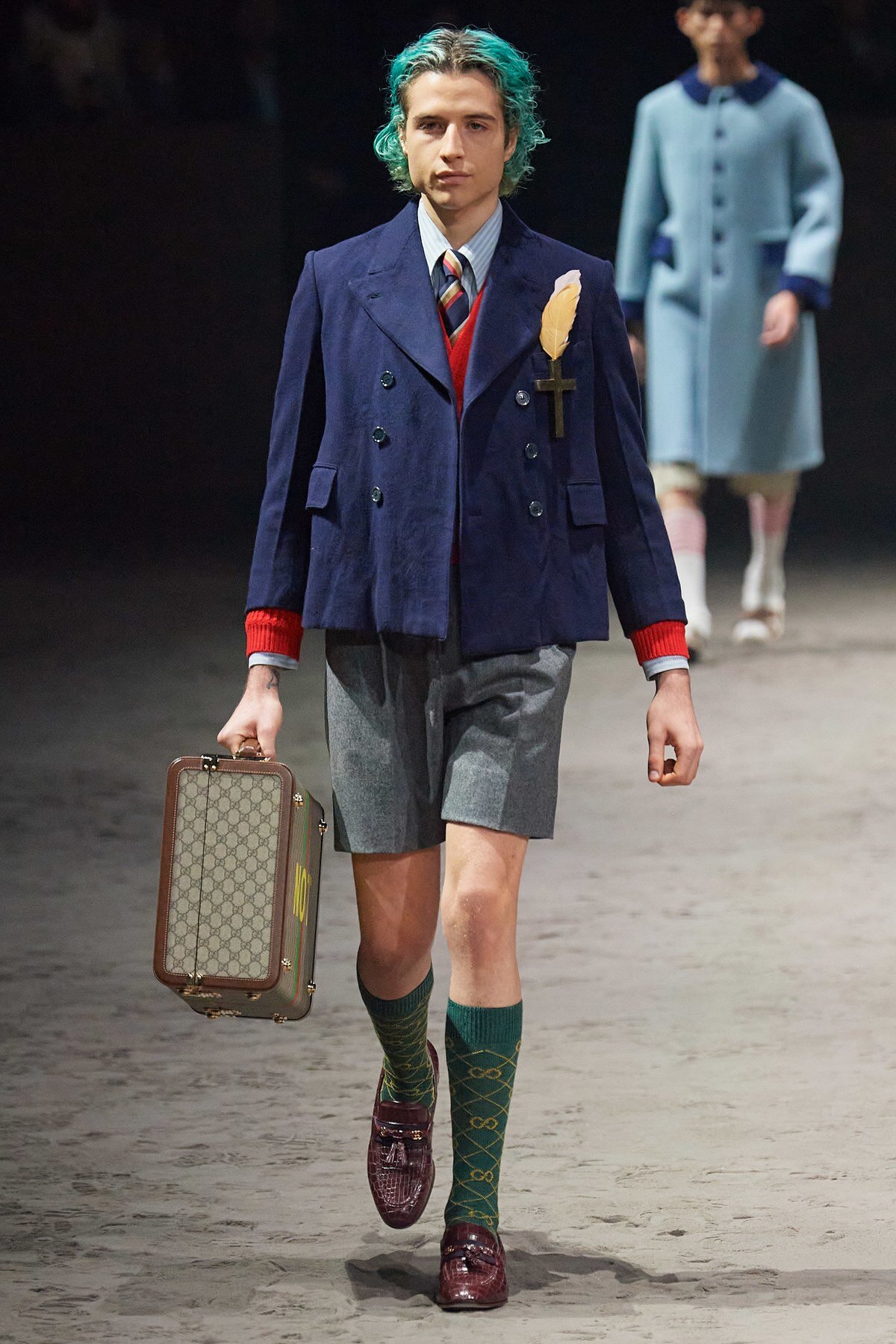
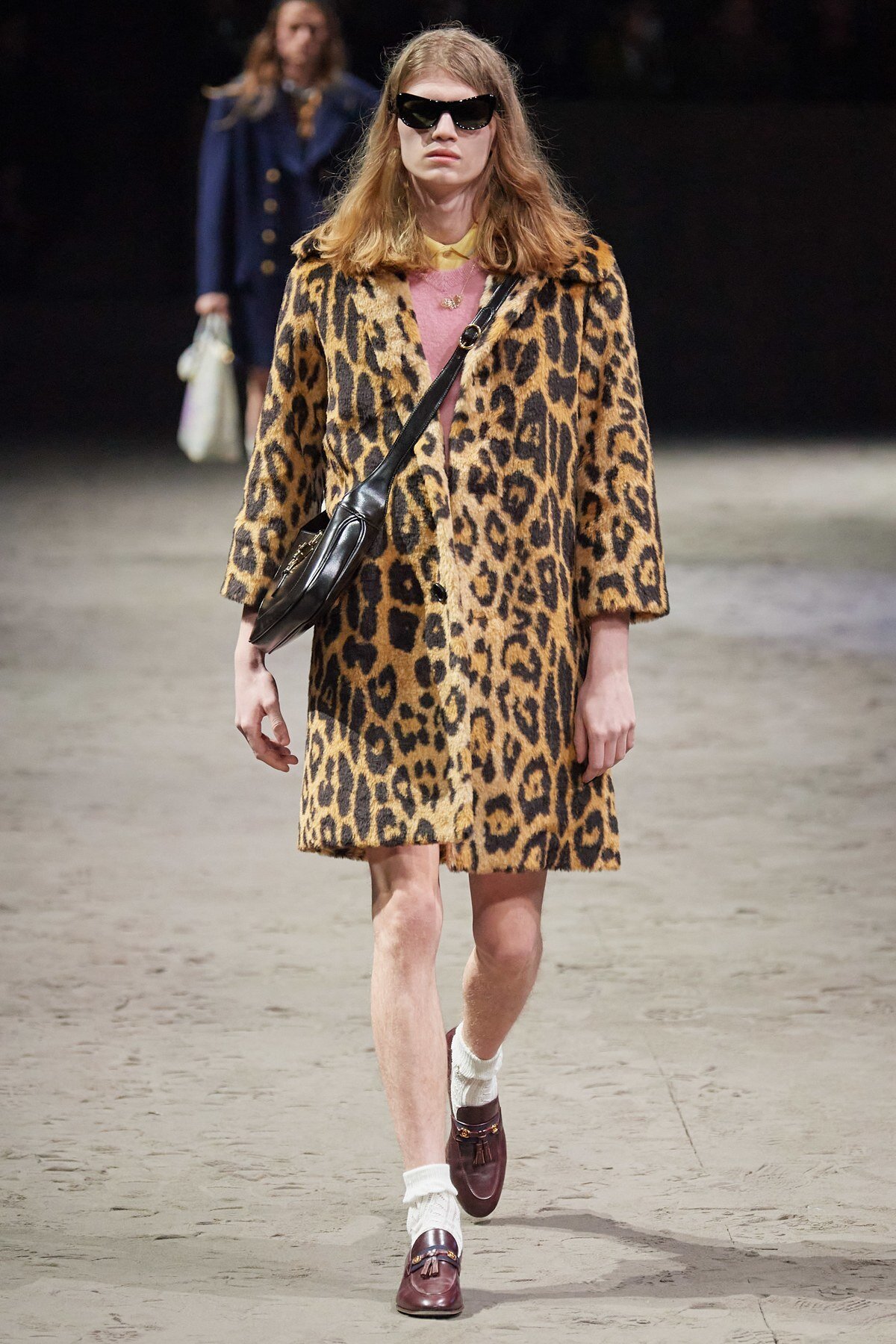
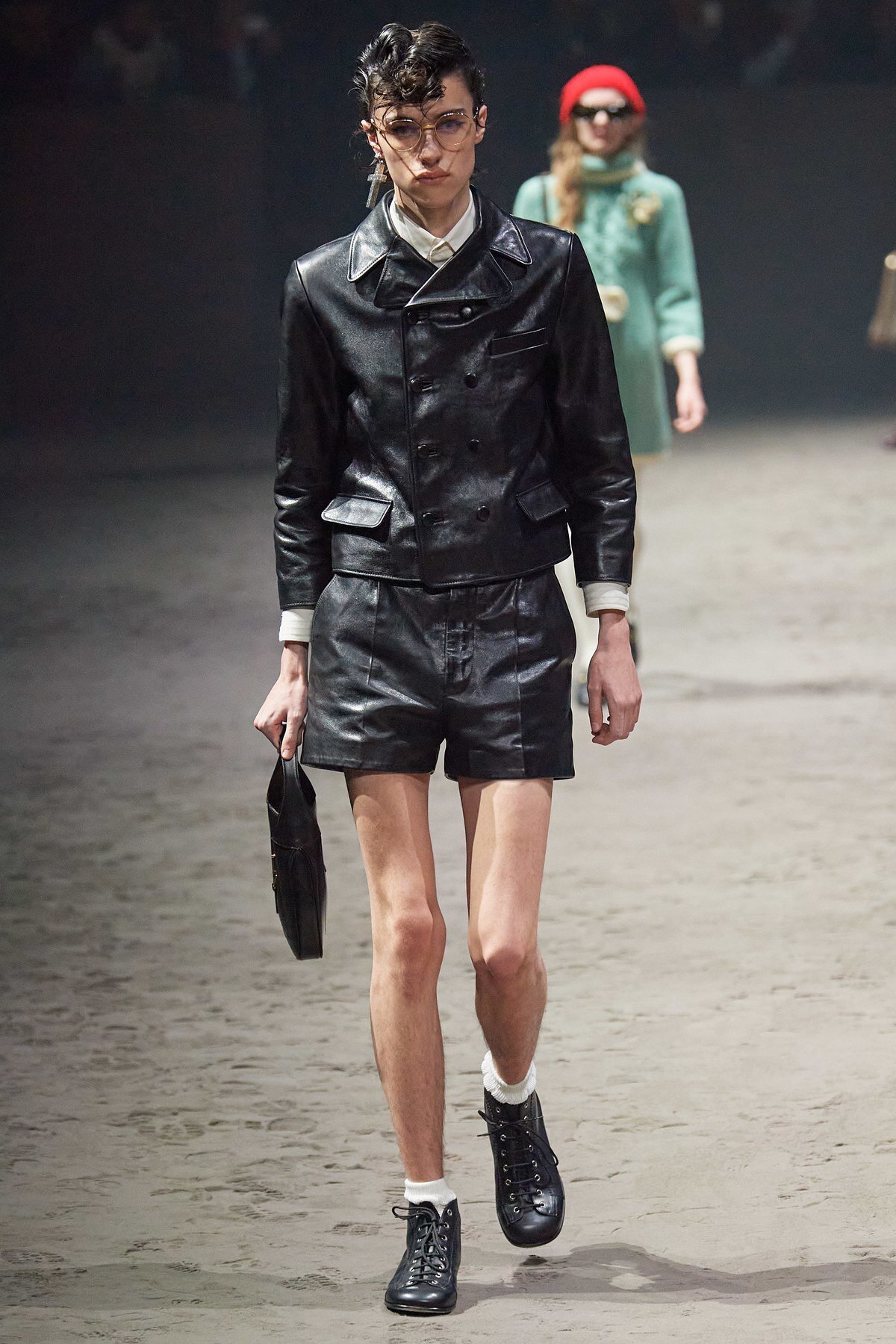
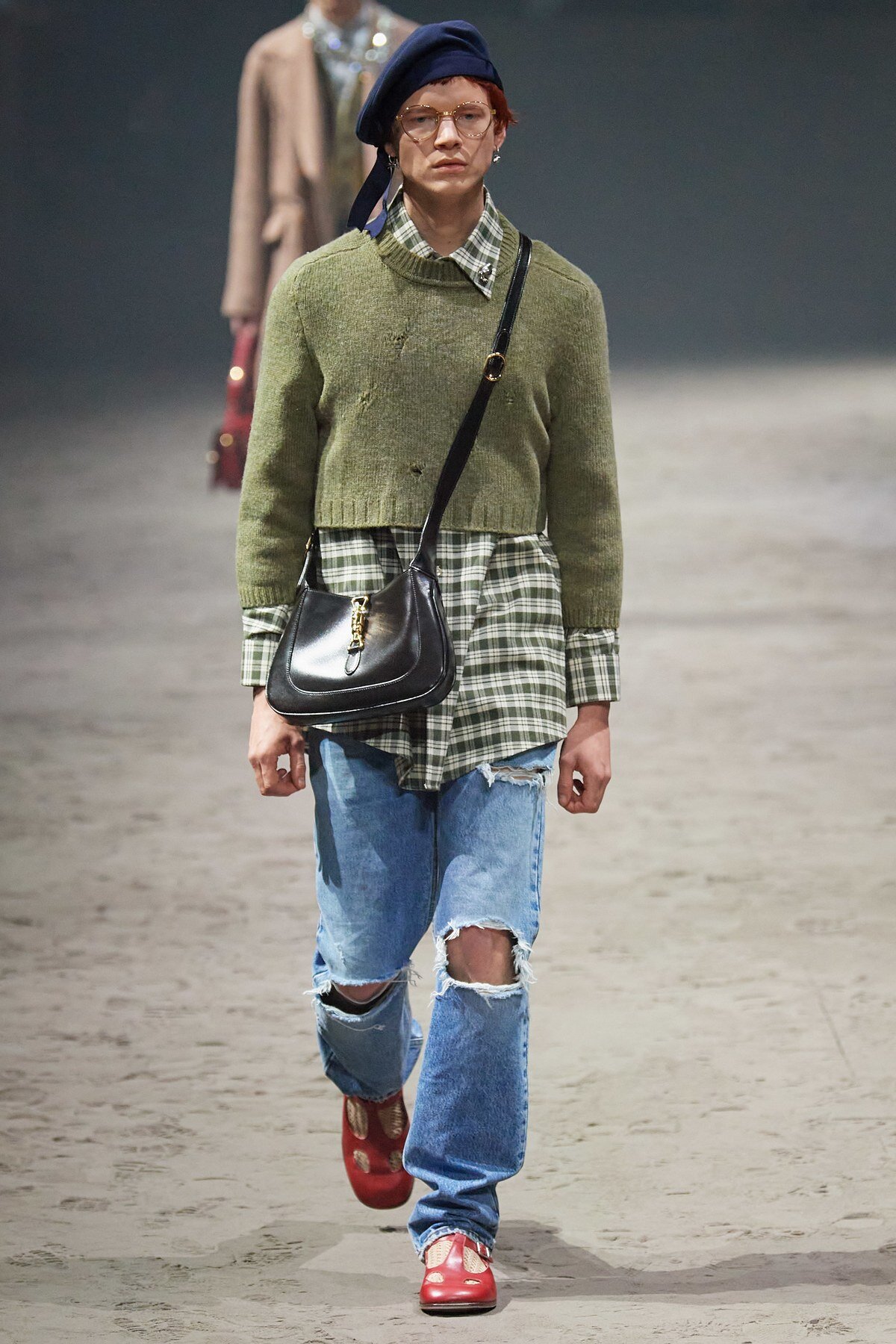

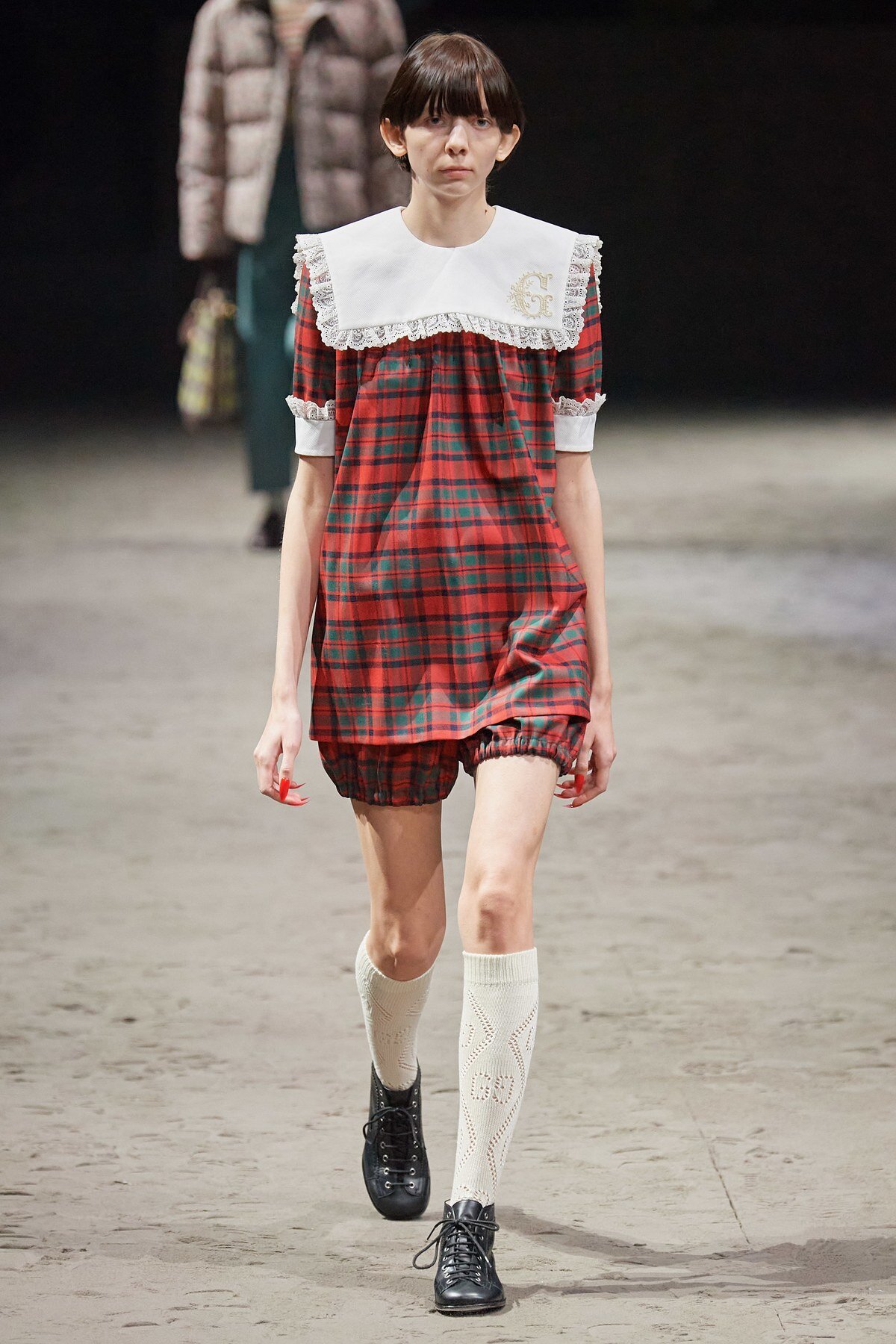
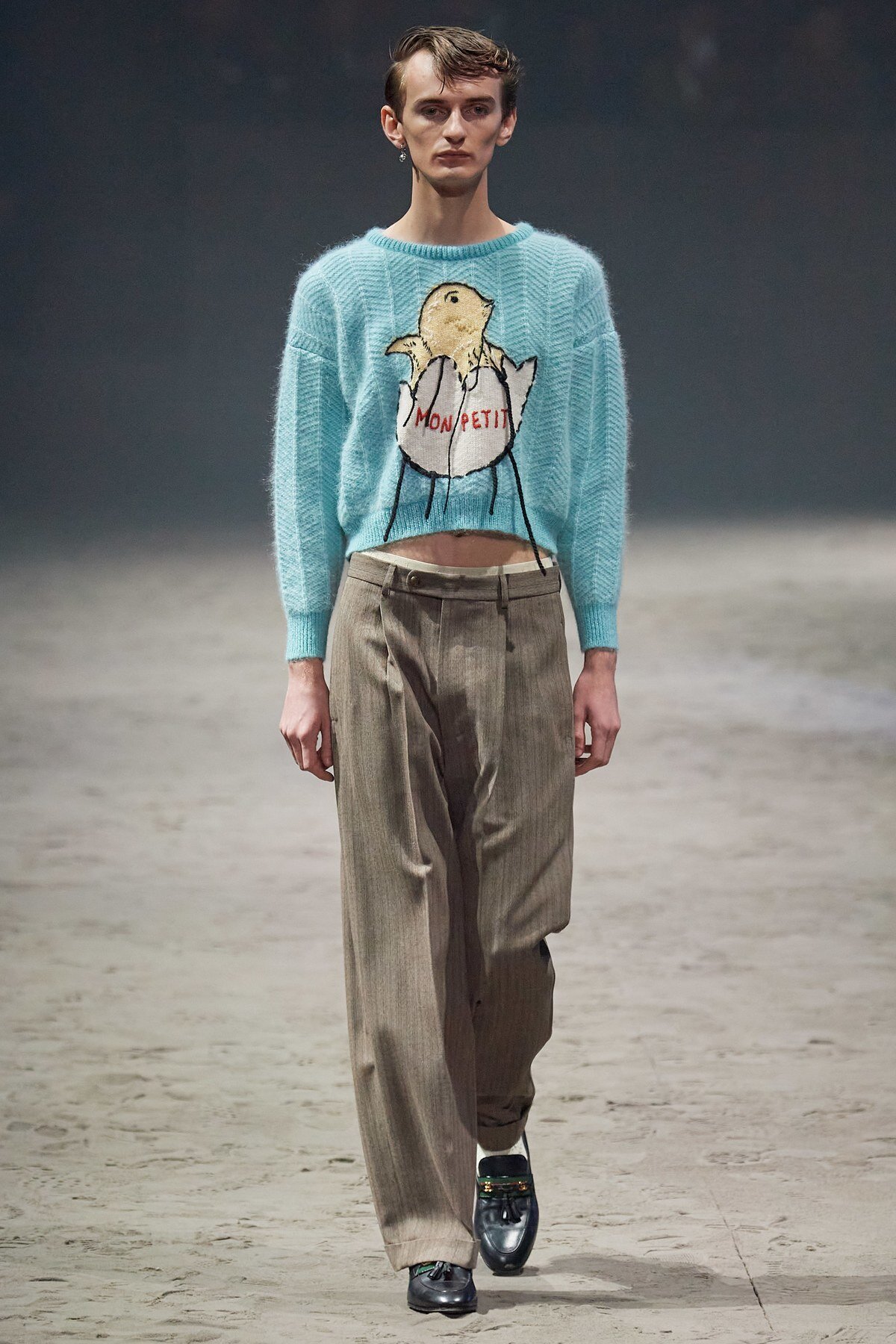
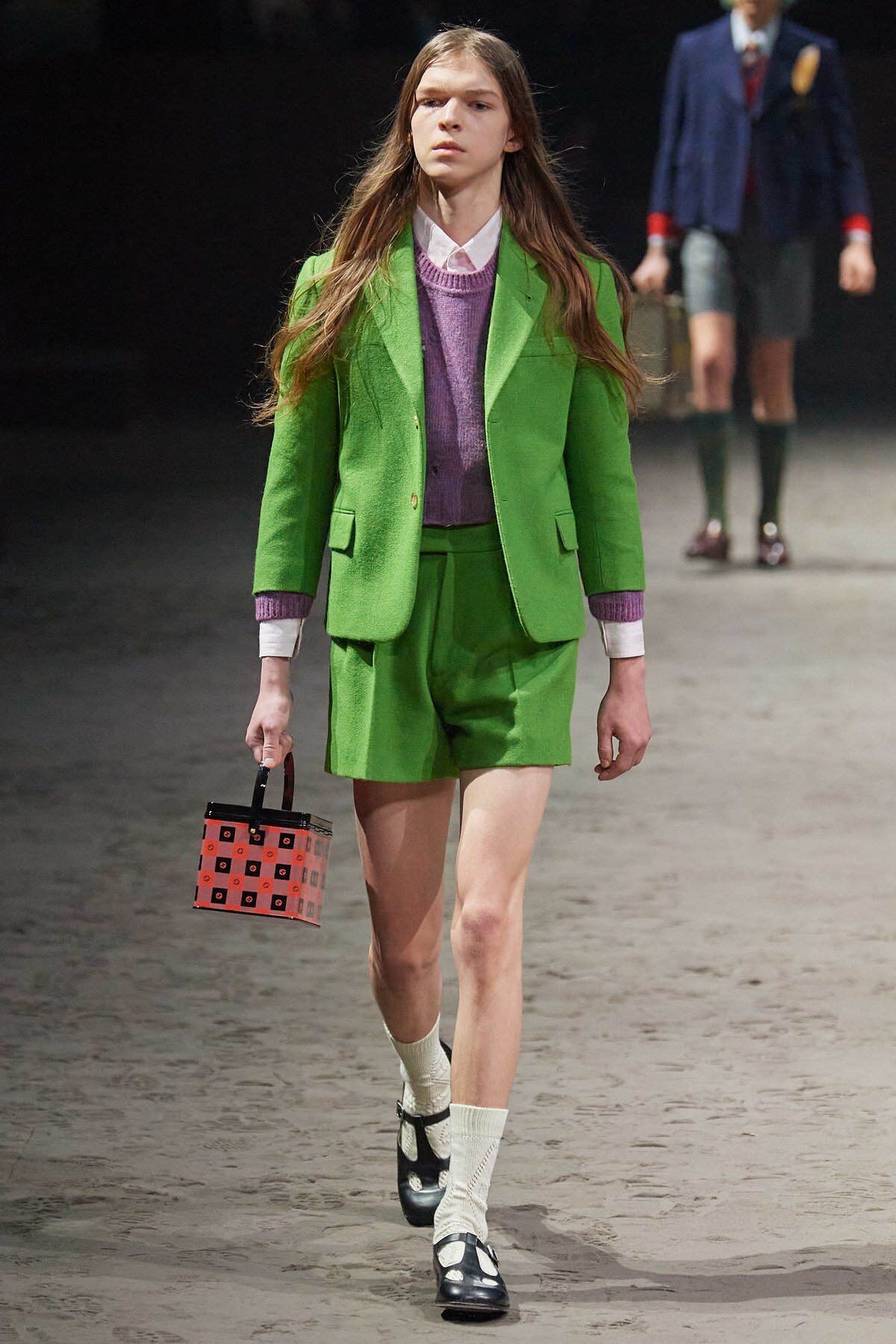










Why the American fashion capital and its millennial consumer seem to be obsessed with nostalgia, how The Row outdid itself again, and the controversial element in Raf Simons’s looks…